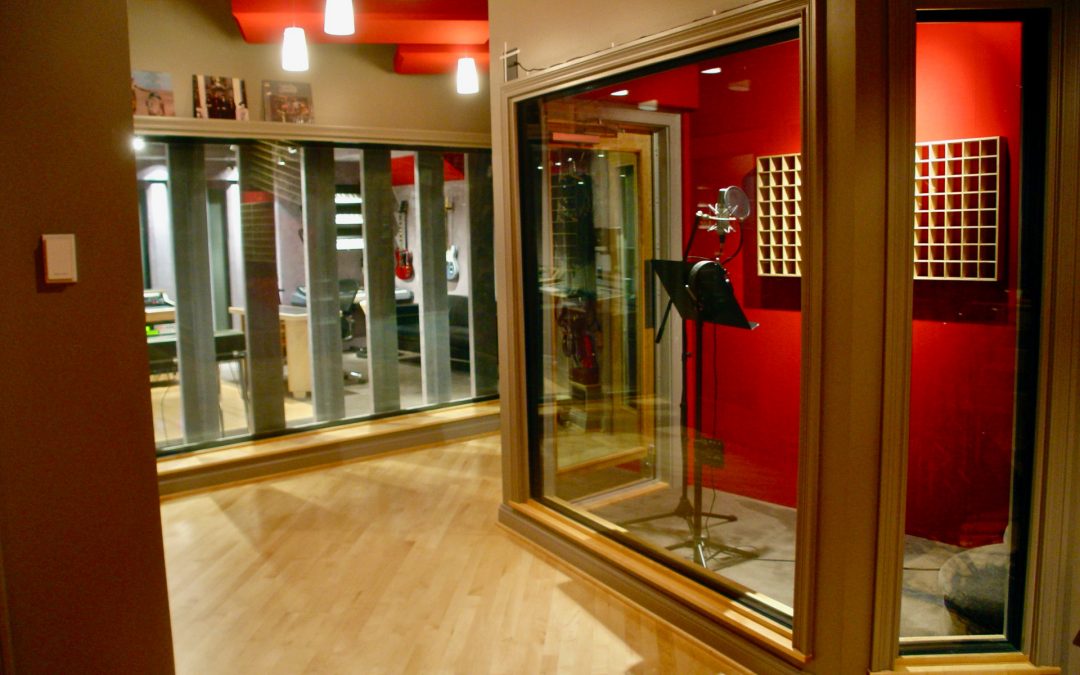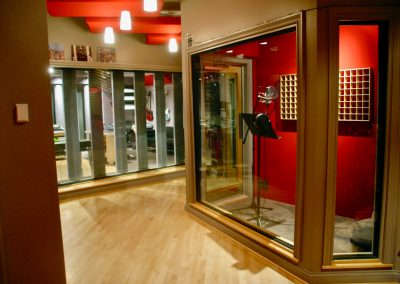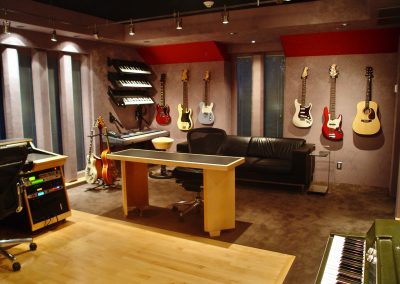By Paul Griffith Nashville Lifestyles, June 2006
“I don’t call them ‘home theaters,”’ says Nashville acoustic designer Carl Tatz. “I call them ‘home screening rooms.’ That’s because we do it at a much higher level-it’s not just a bunch of expensive gear that goes in a room and doesn’t sound that good.” Tatz, who’s one of America’s top audio designers, is talking about his passion: creating state-of-the-art home video installations that rival the dubbing stages used by Hollywood studios. “I love movies,” says Tatz. “And being a musician, love the sound part especially. Taking the extreme tech side and bringing it into the screening room, that’s what makes my work unique. Having a really wide screen, and making the sound come from that…regular hi-fi speakers just aren’t appropriate. Because I’m a designer, I don’t have to sell what’s on the shelf; I pick the gear that’s right for the job and what works best for the client. I bring studio sound into home screening, and that’s what makes people’s jaws drop–it’s the performance that makes it exciting for me.” Tatz comes by his obsession honestly. Originally from Providence, R.I., his father owned a drive-in movie theater. As a young boy, Tatz worked in the concession stand, but his heart was in the projection booth where he watched classic movies like Lawrence of Arabia and West Side Story. After stints in Denver and California, Tatz moved to Nashville as a bass player. Eventually, he became the maitre d’ at Julian’s, the now-closed four-star restaurant that was a Nashville institution. While at Julian’s Tatz kept his hand in the music business, conducting recording sessions in his guesthouse and writing songs. Business was good, and he soon needed a larger facility. Tatz founded Recording Arts, and, over the next 18 years, his clients included such Nashville royalty as Dolly Parton, Alan Jackson and Faith Hill. Tatz sold his legendary recording room to pop superstar Sheryl Crow in 2003. At the heart of Tatz’s designs is a trademarked tool he calls the “PhantomFocus System™.” Using established protocols along with a selection of hardware, software and audio imaging devices – he literally tunes a listening room. With the incorporation of speaker/listener position, dampening devices, equalization, laser alignment and phase control, sound is recreated in pinpoint detail. These home-screening facilities can be dedicated rooms, which are like miniature theaters, or convertible rooms that double as living rooms or dens. In either case, performance and interior design are given equal weight in order to produce a true cinematic experience-a reaction Tatz likes to call “the wow!” “A few years before I sold Recording Arts I’d started designing other recording studios and people’s home and monitoring studios,” says Tatz, who currently employs a couple of local contractors to assist him. “I was self-taught, but then again I’d been around the best recording engineers in the world. Architecturally, if I didn’t know something, I’d hire a top firm even though some of these guys were $250 an hour with a $750 minimum. I’d do it because I knew that 1 wasn’t going to learn it from anybody else in such a short time. I learned from the best. It’s something I’ve tweaked and tweaked and I continue to do it. Every room I do, I try to make it a little bit better than the last one.” Tatz still designs home recording studios. Currently, he’s working on a full-service facility for Jay DeMarcus, who’s the bass player for multi-platinum country artists Rascal Flatts. “This is going to change my life drastically,” says DeMarcus, who’s obviously excited about his new toy. “I can do anything I want up here and not worry so much about budgets. Plus, a lot of artists feel more comfortable in an environment like this rather than being in a commercial studio. Carl is awesome because if I have an idea, no matter how crazy, he’ll try to accommodate it.” According to Tatz, the home studio phenomenon is indicative of a different mind-set in recording. Most commercial studios, he claims, are owned by multimillionaires who may not even be in the recording business. Home studios, on the other hand, are an expression of the owner’s unique personality and work style. Tatz’s job is to interpret that uniqueness and incorporate it, tangibly, into his designs. “It’s really satisfying to please people, to give them what they want,” he says. “My passion is making it look great and sound great. I like to do the whole gestalt. For example, [DeMarcus’s studio] is going to be a really great environment to record in-with the light and the trees … there’s something really Zen about it.” It’s true. DeMarcus’s studio makes remarkable use of available space, with a tuned drum booth, vocal isolation and a control room straight from the Starship Enterprise all in the comfort of home. Above all, though, it is beautiful. “You should see it at dusk,” Tatz says. “It’s totally cool.”


